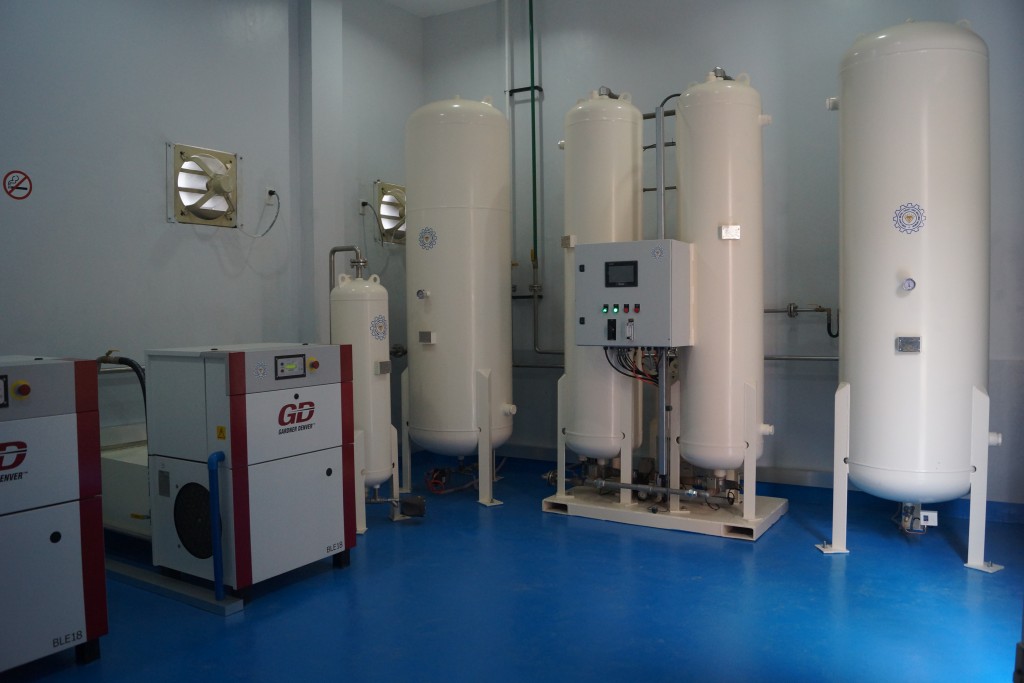Last August of this year, a 15-year-old girl in Dagupan City was reported dead after receiving the treatment she needed for mild asthma. It was supposedly a manageable case that did not warrant complicated medical procedures or heavy drug dosages to alleviate her condition. Her airways only demanded for a healthy supply of fresh oxygen coming from a metal cylinder tank for her lungs to function normally again. But after two hours, the equipment that should have given her the air to breathe became the reason why she would desperately gasp for it in the remaining minutes of her life.
Not long after the patient’s death, it was found out that her clean lungs were infiltrated by foreign substances that had made breathing impossible. She had inhaled fine particles of rust coming from the inside walls of the metal cylinder tank that supplied the oxygen she needed during her confinement.
This incident is just one of the numerous accounts of death caused by rustic oxygen all over the country. While other cases still remain uncharted, the girl patient’s case had been alarming enough to break through the attention of the Private Hospital Association of the Philippines, Inc. (PHAPI) which eventually created ripples of awareness among the public regarding the hazards of oxygen tanks. Does the supposed life-giving equipment cause more harm than good?
Health hazards from oxygen tanks
In light of the questions raised by some hospitals regarding the equipment’s sterility and safety, the United Stated Food and Drug Association (FDA) conducted a study on the threats posed by oxygen tanks to the overall healing of the patients. The study and the presentations during the hospital conferences and conventions staged by the agency revealed that oxygen tanks contain powder-like impurities inside their walls and apparent iron rusts that are straight-out detrimental to patients when inhaled. Instead of healing patients from their illnesses, continued use of oxygen tanks will only worsen their conditions because of the contaminated oxygen they bring.
Rustic oxygen is just the tip of the iceberg of the possible dangers that this metal cylinder tank can cause. During a convergence of medical experts at Radisson Blu Hotel last June 26 that aimed to discuss the challenges and opportunities in hospital systems, Dr. Eli Belarmino, medical director of Visayas Community Medical Center (VCMC), said that oxygen tanks contain in them highly concentrated oxygen at 99.9% which is “not the right kind” of oxygen for human consumption. Highly-concentrated oxygen is ideally used for industrial purposes to complete the combustion process of metals. When inhaled, this may lead to oxygen toxicity which causes series of adverse effects to the Central Nervous System, lungs, and eyes such as convulsion, difficulty in breathing, pain within the chest, and retinophathic conditions.
As if these facts are not alarming enough, records have it that one of the leading diseases in the Philippines is lung diseases. While all lung diseases require oxygen supplementary therapy, most health care institutions especially government hospitals still use oxygen tanks nowadays, unaware that there is already a new oxygen generation system that eliminates the use of rusty, dangerous metal tanks.
A “divine intervention” for hospital systems
Aware of the perils of oxygen tanks and how most people are still clueless of this, Edward Dampor, president of Cebu-grown company BMC Hospital Systems, said that a breakthrough in the oxygen generation system is now available for the market to rule out the concerns regarding oxygen contamination and safety. BMC Hospital Systems aims to rid the worries of the public associated with cylinder-stored medical oxygen by producing centralized medical oxygen pipeline systems and oxygen generators.
With these new advancements, rusty oxygen tanks together with all its dangers can now take the backseat as BMC’s centralized oxygen pipeline systems facilitates the access of medical grade oxygen by piping it directly into patients’ hospital rooms. This system can be installed easily in hospitals and guarantees great investment payback and savings. The entire pipeline system only requires a minimal space, too.
Dampor also underscored how BMC abides by the International Organization of Standardization (ISO) Medical Oxygen Standards. They produce the right amount of oxygen needed by a human body which is concentrated at 90-96%. BMC uses tanks made out of Chrome Nickel Molybdenum, a type of steel that has strong resistance to rupturing, high pressures, and cracking from hydrogen attack and, therefore, leaves no room for rusting. At the moment, VCMC is the only hospital in Cebu to have this facility.
People now have the access to rust-free medical grade oxygen at a very reasonable price. With this breakthrough in medical systems, patients are now free from being choked by the worries of cylinder tanks and can now inhale the possibilities of being healed as soon as possible.
To know more about BMC Hospital Systems and their pipeline system, email them at [email protected] or [email protected].


